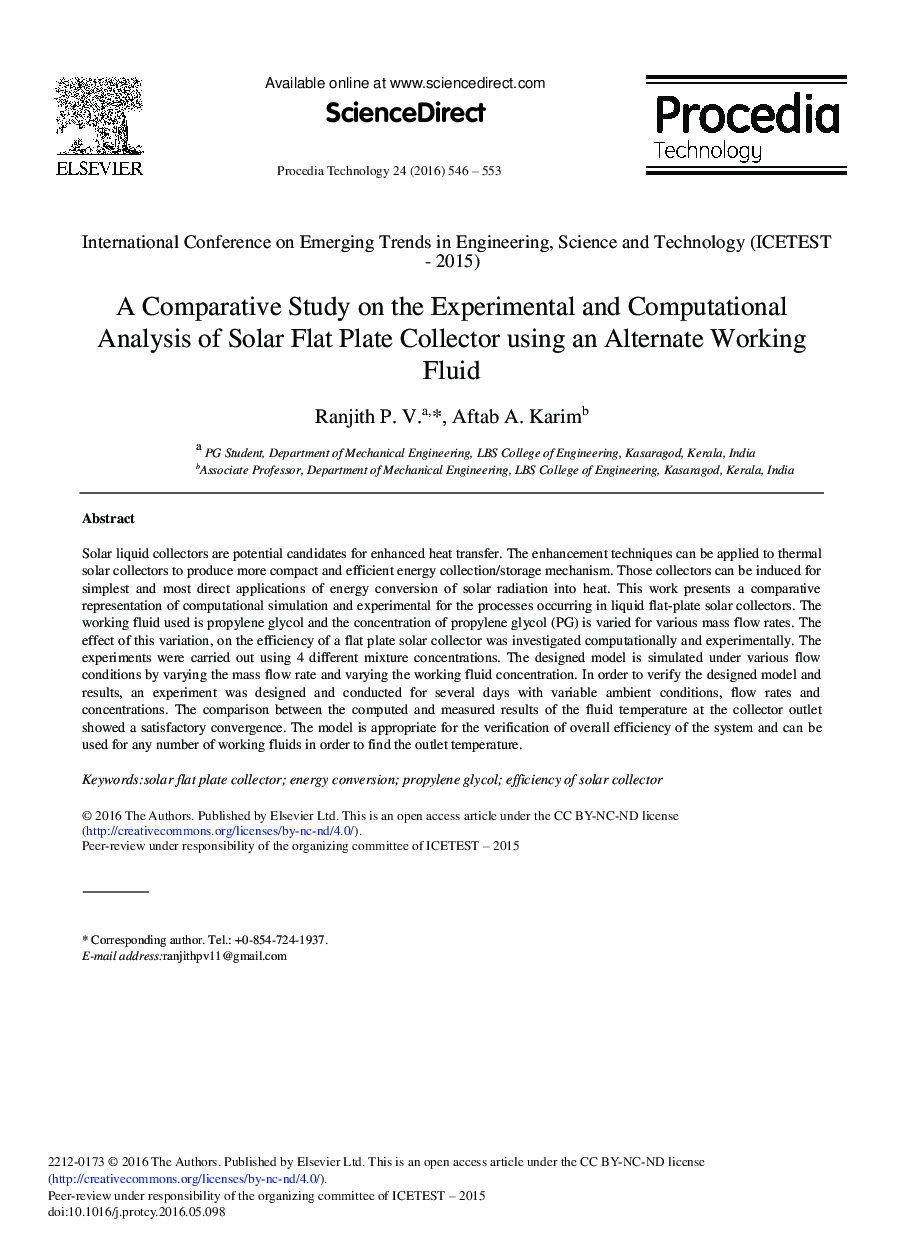| Article ID | Journal | Published Year | Pages | File Type |
|---|---|---|---|---|
| 490694 | Procedia Technology | 2016 | 8 Pages |
Solar liquid collectors are potential candidates for enhanced heat transfer. The enhancement techniques can be applied to thermal solar collectors to produce more compact and efficient energy collection/storage mechanism. Those collectors can be induced for simplest and most direct applications of energy conversion of solar radiation into heat. This work presents a comparative representation of computational simulation and experimental for the processes occurring in liquid flat-plate solar collectors. The working fluid used is propylene glycol and the concentration of propylene glycol (PG) is varied for various mass flow rates. The effect of this variation, on the efficiency of a flat plate solar collector was investigated computationally and experimentally. The experiments were carried out using 4 different mixture concentrations. The designed model is simulated under various flow conditions by varying the mass flow rate and varying the working fluid concentration. In order to verify the designed model and results, an experiment was designed and conducted for several days with variable ambient conditions, flow rates and concentrations. The comparison between the computed and measured results of the fluid temperature at the collector outlet showed a satisfactory convergence. The model is appropriate for the verification of overall efficiency of the system and can be used for any number of working fluids in order to find the outlet temperature.
